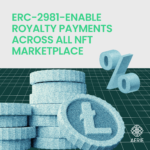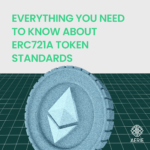“Smart Contracts”: How does it work?
“Smart contracts” are a critical component of many platforms and applications being built using blockchain or distributed ledger technology. Below, we outline the background and functions of smart contracts, discuss whether they can be deemed enforceable legal agreements under contract law in the United States, and highlight certain legal and practical considerations that will need to be resolved before they can be broadly used in commercial contexts.
“Smart contracts” is a term used to describe computer code that automatically executes all or parts of an agreement and is stored on a blockchain-based platform. As discussed further below, the code can either be the sole manifestation of the agreement between the parties or might complement a traditional text-based contract and execute certain provisions, such as transferring funds from Party A to Party B.
The code itself is replicated across multiple nodes of a blockchain and, therefore, benefits from the security, permanence and immutability that a blockchain offers. That replication also means that as each new block is added to the blockchain, the code is, in effect, executed. If the parties have indicated, by initiating a transaction, that certain parameters have been met, the code will execute the step triggered by those parameters. If no such transaction has been initiated, the code will not take any steps. Most smart contracts are written in one of the programming languages directly suited for such computer programs, such as Solidity.
At present, the input parameters and the execution steps for a smart contract need to be specific and objective. In other words, if “x” occurs, then execute step “y.” Therefore, the actual tasks that smart contracts are performing are fairly rudimentary, such as automatically moving an amount of cryptocurrency from one party’s wallet to another when certain criteria are satisfied. As the adoption of blockchain spreads, and as more assets are tokenized or go “on chain,” smart contracts will become increasingly complex and capable of handling sophisticated transactions. Indeed, developers already are stringing together multiple transaction steps to form more complex smart contracts. Nonetheless, we are, at the very least, many years away from code being able to determine more subjective legal criteria, such as whether a party satisfied a commercially reasonable efforts standard or whether an indemnifications clause should be triggered and the indemnity paid.
Before a compiled smart contract actually can be executed on certain blockchains, an additional step is required, namely, the payment of a transaction fee for the contract to be added to the chain and executed upon. In the case of the Ethereum blockchain, smart contracts are executed on the Ethereum Virtual Machine (EVM), and this payment, made through the ether cryptocurrency, is known as “gas.” [1] The more complex the smart contract (based on the transaction steps to be performed), the more gas that must be paid to execute the smart contract. Thus, gas currently acts as an important gate to prevent overly complex or numerous smart contracts from overwhelming the EVM. [2]
Smart contracts are presently best suited to execute automatically two types of “transactions” found in many contracts: (1) ensuring the payment of funds upon certain triggering events and (2) imposing financial penalties if certain objective conditions are not satisfied. In each case, human intervention, including through a trusted escrow holder or even the judicial system, is not required once the smart contract has been deployed and is operational, thereby reducing the execution and enforcement costs of the contracting process.
As just one example, smart contracts could eliminate the so-called procure-to-pay gaps. When a product arrives and is scanned at a warehouse, a smart contract could immediately trigger requests for the required approvals and, once obtained, immediately transfer funds from the buyer to the seller. Sellers would get paid faster and no longer need to engage in dunning, and buyers would reduce their account payable costs. This could impact working capital requirements and simplify finance operations for both parties. On the enforcement side, a smart contract could be programmed to shut off access to an internet-connected asset if a payment is not received. For example, access to certain content might automatically be denied if payment was not received…”
PLEASE CLICK HERE TO READ FULL ARTICLE









